Facebook is a diverse platform, perfect for sharing different kinds of content like images, video, gifs, and text-based posts. More recently, the popularity of Facebook groups has added to the list of reasons why the channel is a key pillar to any social media promotional strategy.
Facebook is one of the best platforms to promote your podcast because, well, everyone’s on it. While it’s possible to build a community entirely through your own platform, like your website or email list, it’s also important to go to your customer. That is, you need to meet with your audience wherever they spend time.
Where do most people spend time every day? Facebook.
On average, Facebook users spend 35 minutes per day on the platform. That’s usually not in one sitting, however. Most people check Facebook an average of eight times per day, a few minutes each time.
Given the impressive size of the community, Facebook is a key channel to grow your fan base. If you’re ready to start building a following, use these six steps to set up a dedicated page then start promoting your podcast on Facebook.
Tip
Ready to grow your audience? Learn how to market your show in our complete guide: How to Promote a Podcast: The Ultimate Podcast Marketing Guide
Step 1: Set Up a Facebook Page From Your Personal Account
You can’t promote a podcast on Facebook with a personal account so step one is creating a dedicated Facebook page for your show. Visit your News Feed and click the link in the left column. Then follow Facebook’s steps until your page is complete.
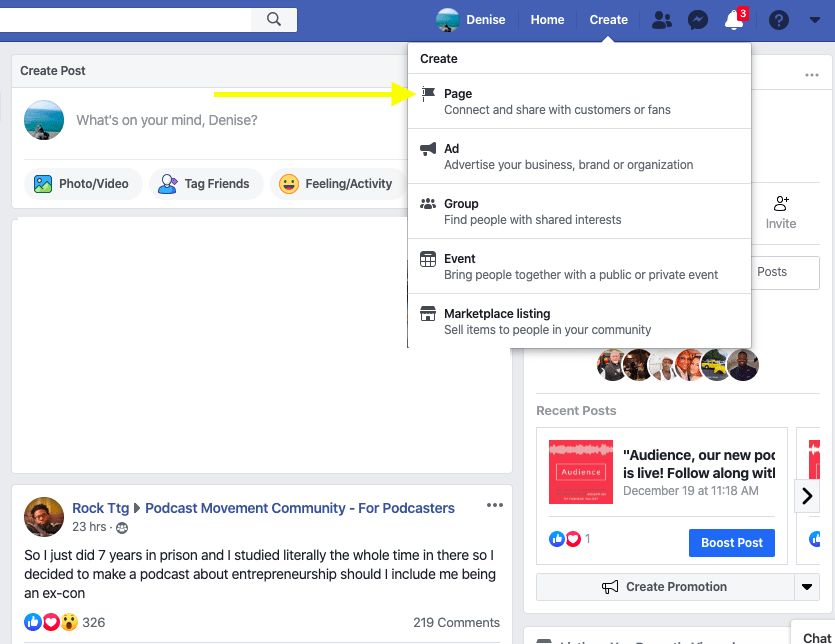
Ideally, use your podcast’s title as the name of the page (or as close as possible) so your audience can easily connect the two. Next, add artwork for your profile image and cover photo. Use imagery that relates to your podcast artwork and brand. You don’t need design skills or special tools to create awesome artwork. These tips will help.
Finally, make sure you fill out every field that makes sense on the About tab. This is where fans and new listeners will visit to learn more about your show. Show off your podcast’s voice here and include a link to your podcast’s website so users can easily subscribe to the show.
Step 2: Create a Content Calendar
The best way to garner and increase engagement on Facebook is to consistently post content. Establishing a content calendar is the best way to get organize and give yourself the best shot at regularly updating the page with fresh posts.
Your goal is to publish content that compels your audience to interact. On Facebook, likes, shares, and comments are worth gold. The more you get, the farther Facebook’s algorithm will spread your post. This means you can’t be 100% self-promotional. A majority of your posts should be content that encourages interaction so when you do post something promotional, everyone sees it.
To organize your Facebook posts, you’ll need a content calendar. Like your podcast content editorial calendar, your Facebook calendar maps out what you’ll publish over time so you always have something to post. If you publish to multiple social media sites, it’s smart to fold them all into the same calendar.
You can organize your content calendar any way you like. Some hosts like to give each day a theme. For instance, Mondays will be the day they post quotes, Tuesdays are for relevant industry articles and Wednesdays are video posts. Other hosts take a more organic approach by simply posting whatever they come across and weaving in their promotional content along the way.
The calendar you use to promote a podcast on Facebook can be as simple as a spreadsheet.

Or try using a Trello board.
Or a dedicated social media scheduling tool like SproutSocial, Hootsuite, CoSchedule, or Buffer.
If building social media engagement is a priority for your podcast, a social media scheduling tool to help create a pipeline of content that publishes on its own once you create it. It’s an efficient system that allows you to better diversify your post’s content and you can schedule all of your content at once. Here are some good options:
Step 3: Publish Quality Content
Like we said, in order to promote a podcast on Facebook, you can’t be entirely self-promotional. You want to share and create interesting content to get likes, shares, and comments. Aim for an 80%/20% split of non-promotional to promotional content.
According to Buffer, we like things on Facebook to show support, to affirm something about ourselves, to express empathy, and to get something in return. We share to define ourselves, to nourish relationships, to spread the word, to deliver value to others, and for self-fulfillment.
Whether you share someone else’s content or make it yourself, everything you post should attempt to check at least one of those boxes.
Create amazing imagery
Facebook is a highly visual platform and users are more likely to engage with aesthetically pleasing content. There are several ways to get custom artwork for your Facebook posts if graphic design isn’t in your wheelhouse. You can spend as little or as much money as you can afford. A few options include:
- Work with a marketing and design agency. This is expensive, but they’ll make great content. This usually costs a monthly retainer.
- Hire a freelance designer to make artwork at your direction. Could be expensive, depending on who you hire and how much work you request.
- Purchase one-off projects from platforms like Freelance.com or Fiverr. Prices vary.
- Learn to use Photoshop or Sketch. They cost about $100/year and you’ll need to spend some time learning how to use them. But once you get it down, this is a cost-effective way to spruce up your imagery.
- Use basic design tools like Canva and Picmonkey. These are simple tools with more limited functionality than Photoshop. They’re perfect if your imagery is straight-forward and you don’t want to spend time mastering a design software.
Video posts are king
According to HubSpot, consumer prefer to consume video content from brands over other mediums.
As a host, you may be wondering how to create video assets from an audio-based product. Luckily, there are quite a few ways to repurpose podcast content for videos:
- Take a video recording of your podcast sessions. This works especially well if you sit down with your guests in the same location. If you don’t sit with your guests, turn your web cameras on while you talk and take a screen recording of both your faces
- Behind-the-scenes videos of you (and your team, if you have one) preparing an episode
- Live videos of you discussing upcoming episodes
Examples of promotional Facebook posts
With a healthy dose of non-promotional posts filling your page, this is when you can start building out the remaining posts to directly talk about the podcast. Promotion takes many forms so the trick is to find out what your audience finds engaging. Here are some post ideas from our community:
- Audio clips from the upcoming show
- Tease the latest episode drop and link to the episode page on your website
- A deep link into a podcast app where your fans can listen
- Images with quotes from your show
- Behind-the-scenes photos of you and your team
- Photos from the recording session of you and your guest from the upcoming show
To inspire your content, let’s dive into some promotional content from some of the biggest podcasts with massive Facebook followings.
This post by This American Life uses a video to promote the story’s hook. It’s engaging, easy to consume, and makes you want to listen to more.

The Dave Ramsey Show takes a video recording of all their episodes to promote a podcast on Facebook. In some cases, they publish the entire episode on Facebook.

The Armchair Expert with Dax Shepard takes simple photos of the host and guest with some compelling copy.

Rachel Hollis promotes the Rise Together podcast by focusing on her guests. She uses a simple, easy to repeat image template.

Planet Money uses a simple, but effective approach. They link to the page where you can listen to the episode using a unique featured image for each post to grab attention.

How Did This Get Made? takes an interesting approach. They create custom movie posters for the movies they review and post the content a few days before the new episode is live. Since the podcast content isn’t available to streamline immediately, instead they’ve included an enticing pull quote reel users in.

Step 4: Engage With Your Audience
If you want to promote a podcast on Facebook, you’ll have to spend some time engaging with your audience. It’s tempting to send a million posts into the void, but interacting with fans is the real value of social media.
There’s no easy way to do this. To engage with your audience, keep your notifications active and get social. Respond to their comments, thank them for their praise, and answer their questions.
If they know you’ll engage with their comments, they’ll leave more of them, which ultimately boosts your reach (the number of people who see your content).
Step 5: Join Facebook Groups
When it comes to using groups to promote a podcast on Facebook, you have two options.
One on hand, you can create your own Facebook group, invite members, and curate and guide the discussion. This method gives you the most control, but it also takes the most work and the most time since building a community isn’t easy.
Your other option is to join existing groups, participate, and promote your show when it becomes relevant to the conversation. A word of warning: as you join new Facebook communities, make sure you understand that group’s rules about self-promotion. Some do not permit you to link to your own content, except on dedicated posts.
Step 6: Purchase Facebook Ads
Once you’re happy with your Facebook content production, it’s time to look into paid ads.
There are two benefits to advertising on Facebook:
- You can reach people who are interested in your podcast content. You don’t have to spend money advertising to people who don’t care.
- Unlike Google ads, potential fans don’t already have to be searching for your content. Your ads can appear in their feed unrequested.
In order to promote a podcast on Facebook with Facebook ads, you’ll need to jump into the Facebook Ads Manager. If this is your first time buying Facebook ads, you’ll want to follow the prompts carefully. That includes the following steps:
- Choose an objective from the list of options.
- Define your target audience. This is a critical step because it hits the core of Facebook’s value – targeting the right people.
- Set a maximum budget for the campaign (in terms of daily and lifetime spend).
- Create your ad. You can use an existing post or make something entirely new. You can choose one of five formats: Carousel, single image, single video, slideshow, or canvas.
- Choose your placements (where the ad will display).
- Place your order.
Don’t be discouraged if you don’t get clicks right away. Ads require tweaking and optimizing over time to work well. It varies depending on your industry, but the average click-through rate of Facebook ads is less than one percent.
7. Work With Influencers
A social media influencer is a person or brand with an existing, captive online audience that takes action based on the influencer’s recommendations.
For example, when Oprah tweeted about her partnership with Weight Watchers, the company’s market value rose around $6 million per pound she lost. Oprah’s fans trust and believe what she says. She is an established, powerful influencer. During her Book of the Month Club, 59 of the 70 books she selected to promote and discuss made it to the bestseller list.
While you may not be able to get Oprah’s attention, there are plenty of social media influencers who will work with your podcast. Once you find the right ones, they’ll be able to:
- Promote awareness for your podcast
- Actively endorse your shows and sponsors
- Drive conversions/increase downloads
Find your podcast’s social media influencers
A social media influencer can be anyone online with a following, such as product reviewers, bloggers, writers, industry experts, and your competitors (other podcasts).
Brainstorm keywords from your podcast’s niche. Then think of keywords that may be outside of your podcast, but within your core listener’s interest. For example, if you host a podcast about skiing, you’ll want “ski trails” and “ski gear,” but also “winter travel” and “hot chocolate.”
Set up Google Alerts for these keywords to become aware of those who are creating content about your niche. If you’re looking for thought-leaders, search LinkedIn with these keywords.
Use the same keywords in BuzzSumo to find the most-shared content. Influencers should not only have a large audience of followers and subscribers, they must also have an active relationship with them. Don’t consider the number of followers as important as the number of shares or engagement each post received.

Your perfect social media influencer should…
- Share a similar target audience.
- Post topics that your podcast audience would like.
- Actively engage with his/her followers.
- Be available to promote your podcast (i.e. doesn’t already promote another one)
Make a list of potential influencers and explore their content. Pay attention to their schedule, how they typically promote content that’s not their own, and how they interact with their followers.
Engage with your social media influencers
If you like what your potential influencers post, start engaging. Your goal is to create an organic relationship based on mutual interest. Try to provide value to your influencer by giving them content to share with their audience and asking for nothing in return. Get them to see your name often, but don’t become a nuisance in their life.
Here are some ways to do that:
- Actively read and share their content
- Make genuine comments that add to or start conversations
- Participate in their Twitter chats and other events
- Link content that you think they’ll enjoy.
- Follow all of their social media profiles.
Ask if they want to cross promote
Eventually you’ll need to send them a message about your intentions. Casually explain that you both target the same audience and your content would work well together. Explain that you want a mutually beneficial relationship of sharing each other’s content. You can offer guest appearances and interviews on your show, mentions, endorsements, and reviews for their sponsors, etc. Just make it worthwhile for your influencer to help you out and they will.
Moving forward, focus on building a relationship that’s a win for both parties. You should each explain your goals for content and how you can help each other. This will increase your results and provide more value to each party’s followers, which creates higher subscriber and engagement numbers.
Over time, build a network of influencers who work together. The right influencer partners can explode your exposure and help you tap into already built audiences. Provide them with images, photos, audio clips, and other assets to share on Facebook and other platforms.
Even though you’re marketing your podcast night and day, it doesn’t hurt to have someone with similar goals also pushing your content to their audience. This trusted word-of-mouth approach will pique the interests of potential listeners and drive engagement with your podcast.
Summary
Social media is a powerful tool to reach new listeners and engage your fans, but it takes time to build a following. If you hit a plateau, continue testing the types of content you’re posting and how you’re positioning the copy. Once you find a framework that garners engagement, try iterating on the concept to avoid post fatigue. Promoting a podcast on Facebook is a core pillar to a social media marketing so it’s worth the investment in refining your strategy.
Action
Read to start your own podcast? Learn the nitty-gritty details of starting your own show in our comprehensive guide. Learn how to start a podcast.


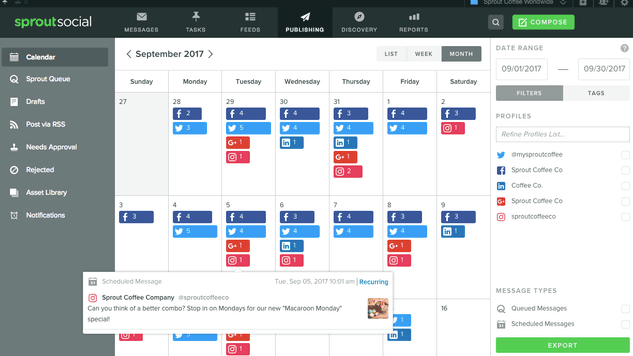
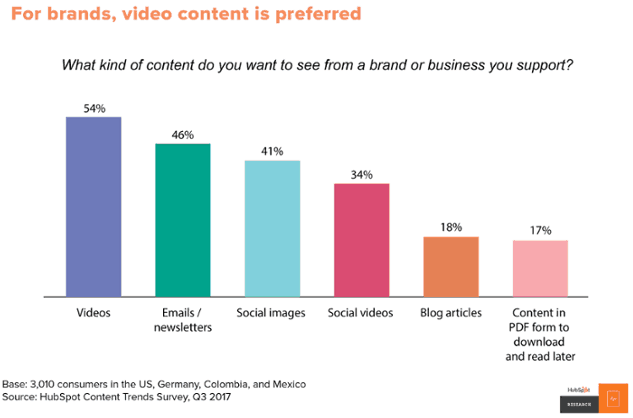

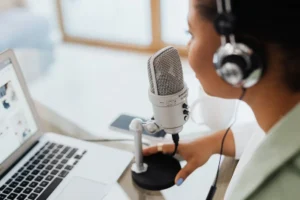
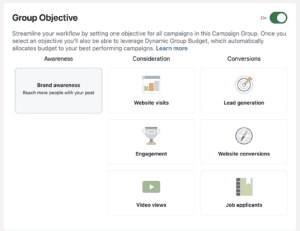
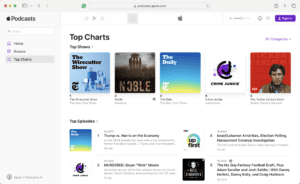
Podcast really great feature for promotion. Thank you for sharing this great article onpodcast
Very helpful content. Thank you
Thanks for this! Very helpful! My podcast focuses on how the pandemic has impacted people’s lives, work and relationships…and how that has changed their paths moving forward. I’ll look for similar areas of interest, as you suggest.
Thanks.. Helped a lot for me..
This article has been very informative as well as comprehensive . My podcast is called ‘The 3 F Podcast: Faith Family and Fatherhood . It promotes understanding the value of active fathers . This will help